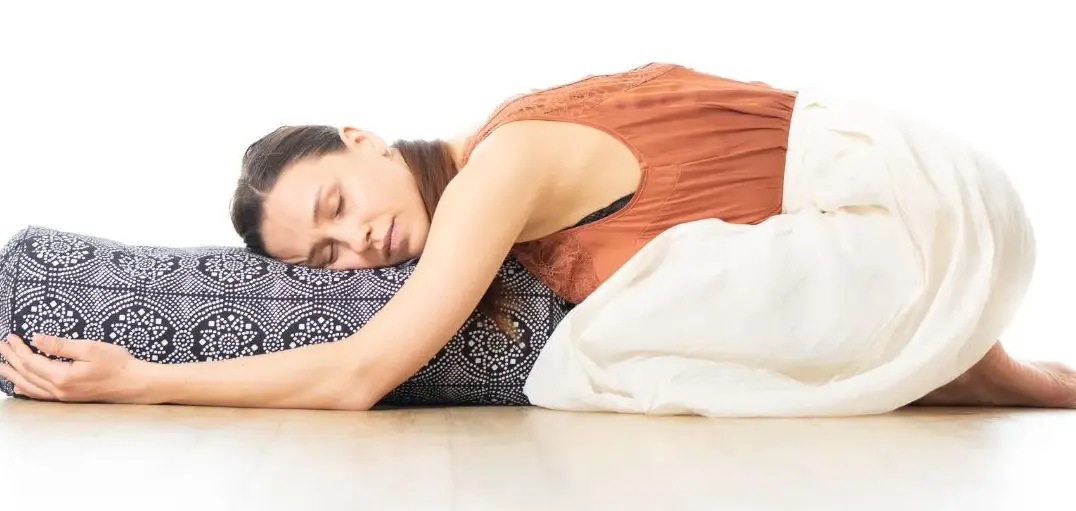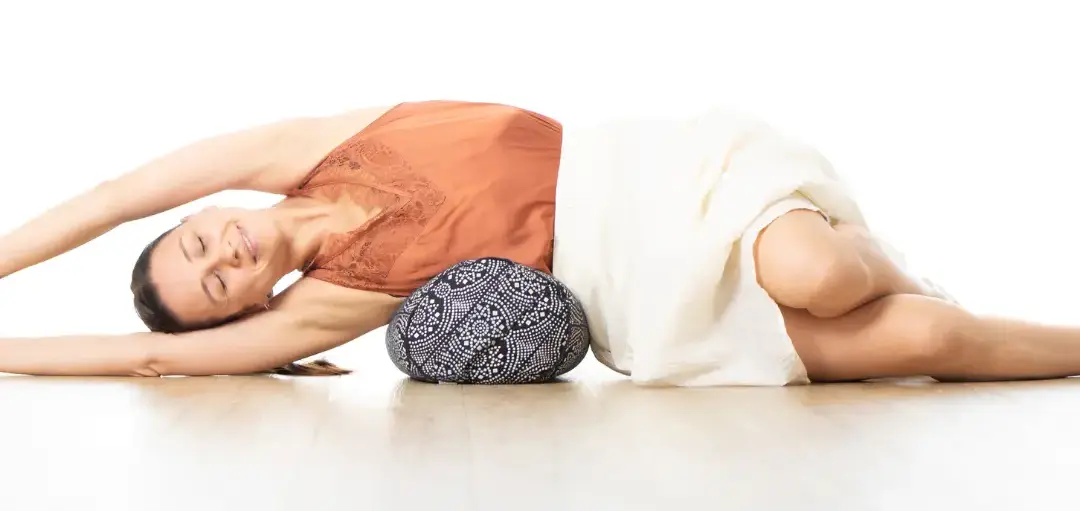Restorative Yoga: A Relaxing Practice for All Levels

Are you looking for a yoga practice that can help you deeply relax and rejuvenate? Look no further than restorative yoga! In The Ultimate Guide to Restorative Yoga: A Deeply Relaxing Practice for All Levels, you’ll discover the benefits of this gentle practice, as well as tips and tricks for getting the most out of your practice, no matter your skill level.
Restorative yoga is a relaxing and supportive practice that uses props like blankets, bolsters, and blocks to help you release tension and let go of stress while you hold poses.
This practice is perfect for anyone looking to unwind, whether recovering from an injury or illness, dealing with chronic pain, or simply looking for a way to reduce stress and improve their overall well-being.
In this comprehensive guide, we’ll explore the foundations of restorative yoga, including key poses and breathing techniques, as well as tips for creating a peaceful and supportive practice space.
So whether you’re a seasoned yogi or just starting, join us as we delve into the world of restorative yoga and discover the ultimate path to relaxation and renewal. Also, see our article explaining the top Yoga Practices!
What is The Restorative Yoga Meaning?
Restorative yoga is a gentle, passive style of yoga designed to promote deep relaxation and stress relief. Unlike more vigorous forms of yoga, restorative yoga focuses on slowing down and opening the body through passive stretching.
The practice involves holding poses for extended periods, often with the support of props like blankets, bolsters, and blocks to facilitate complete relaxation without strain.
What is Restorative Yoga?
Originating from the teachings of B.K.S. Iyengar, restorative yoga was popularized in the 1970s by Judith Lasater.
This form of yoga aims to activate the parasympathetic nervous system, which is responsible for the body’s “rest and digest” functions, helping to reduce stress and promote overall well-being.
According to Yogapedia, the practice is ideal for those recovering from injuries or illnesses due to its gentle nature
Subscribe to Create Higher Vibrations!
Get Inspiration and Practical advice straight to your inbox.
Benefits of Restorative Yoga Today
Restorative yoga helps with a wide range of benefits for the body and mind. Some of the most significant benefits include:
Reduced stress and anxiety: Restorative yoga can help you reduce stress and anxiety by relaxing the body and mind.
Better sleep: Restorative yoga can help you improve your sleep quality by promoting relaxation and reducing stress.
Improved flexibility: Restorative yoga can help you improve your flexibility by gently stretching and releasing tension in the muscles.
Reduced pain: Restorative yoga can help you reduce pain in the body, including chronic pain and injuries.
Improved mood: Restorative yoga can help you improve your mood by promoting deep relaxation and reducing stress.
Use of Props in Restorative Yoga
Props can serve as a supporting element in your restorative yoga practice, enhancing comfort and further deepening the relaxation you experience during poses.
The support they provide can allow your body to achieve a higher level of relaxation, allowing your nervous system to enter a state of rest.
When your nervous system is calm, your mind and body can reset and recharge.
This allows you to show up as your best self, with your family, friends, coworkers, and in your community.
Consider incorporating the following props into your restorative yoga practice. Whenever possible, select props made from eco-conscious materials that are recycled or organic.
Yoga Mat: Choose a yoga mat that is pliable for your restorative yoga practice. You may even choose to place a blanket over the entire mat to add extra warmth and cushioning.
Blankets: Use a blanket that can offer weight, warmth, and cushioning for your practice. Mexican blankets are a common prop utilized in yoga studios.
Yoga Blocks: Yoga blocks can be made from cork, wood, or recycled foam. You may also utilize a stack of books as blocks when practicing at home.
Bolsters: Bolsters are large, stiff pillows that provide additional support during restorative poses. They are available in rectangular, round, or alternative shapes.
Eye Pillow: An eye pillow is a small, rectangular cushion typically filled with flaxseed or sand. These pillows usually include dried lavender flowers for their soothing aromatherapeutic properties.
You can practice these restorative yoga poses on their own or in any sequence that works for you. Try to include them in your routine as often as possible, ideally every day.
At the very least, aim for once a week to experience the full benefits.
Restorative Yoga Poses
Restorative poses are designed to be held for extended periods, typically between 5 to 20 minutes. Here are some of the key restorative yoga poses to try:
Child’s Pose (Balasana) With Support: Child’s Pose is a gentle yoga pose that can help you relax your lower back, stretch your knees, and feel grounded overall. To perform Child’s Pose, you’ll need two blankets and a bolster.
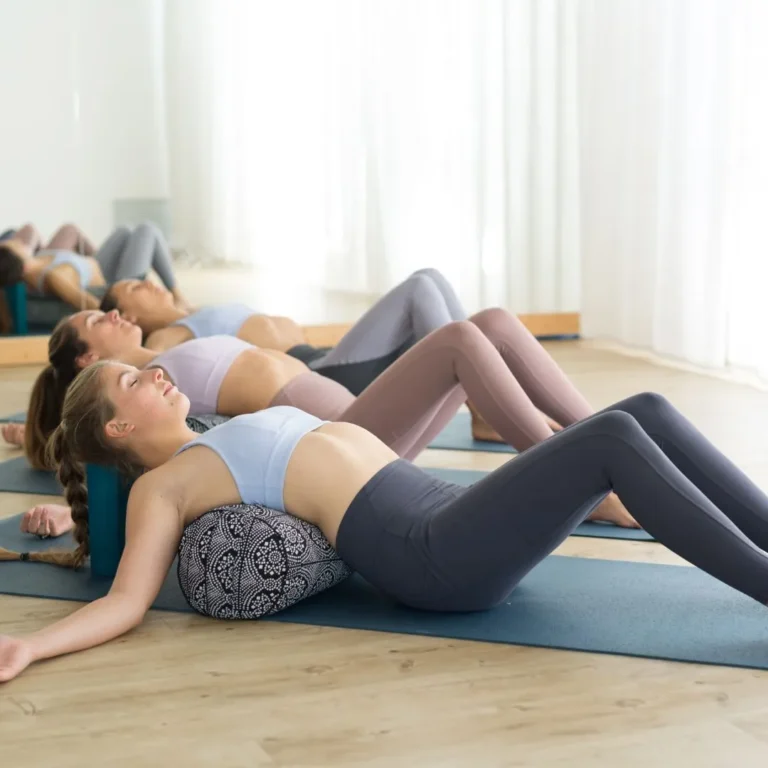
Supported Bridge Pose (Setu Bandha Sarvangasana): Supta Badha Konasana, also known as Reclining Bound Angle Pose, is a yoga pose that can help you relax your back, stretch your hips and groins, and feel grounded overall.
To perform Supta Badha Konasana, you’ll need two blocks and two blankets.
Reclined Twist (Supta Matsyendrasana) With Support: Supported Matsyasana, or Fish Pose, is a yoga pose that can help you open your chest and shoulders, relax your upper back, and feel energized overall. To perform Supported Matsyasana, you’ll need two blocks.
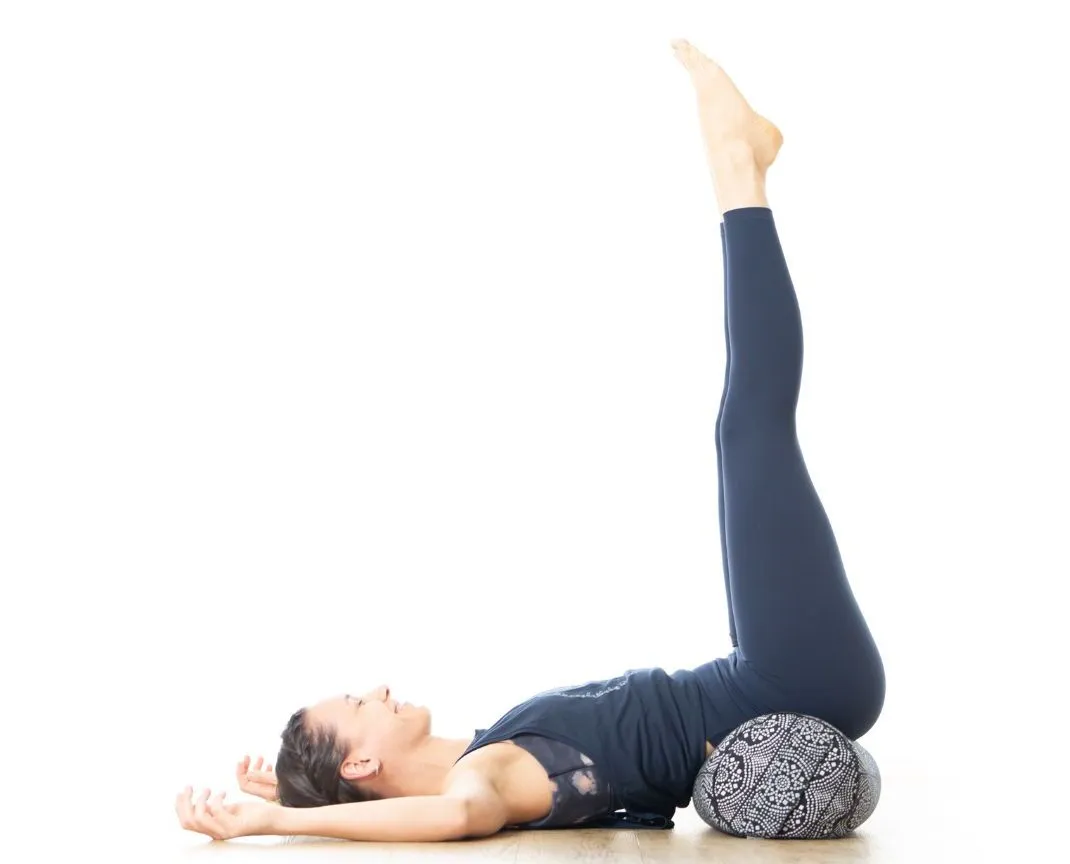
Supported Legs-Up-the-Wall Pose (Viparita Karani): Legs Up the Wall is a yoga pose that can help you alleviate stress, reduce anxiety, and improve circulation. To perform Legs Up the Wall, you’ll need a wall and a bolster or folded blanket.
This pose is great for improving circulation in the legs and reducing swelling in the feet and ankles.
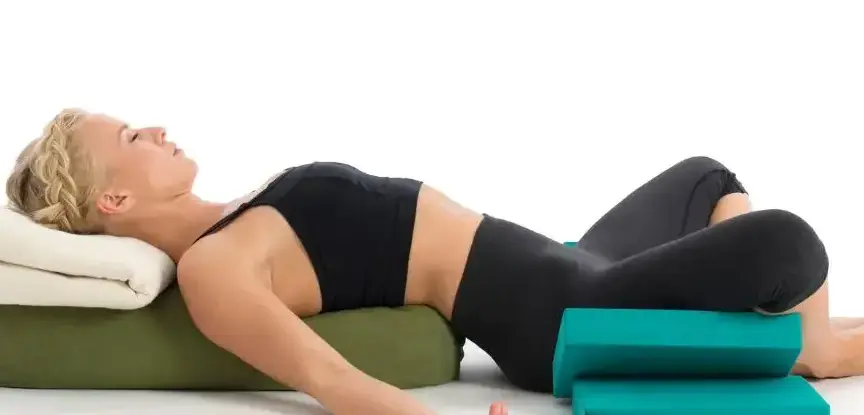
Supported Corpse Pose (Savasana): Savasana, or Corpse Pose, is a pose of total relaxation that can help you reduce stress and tension in your body and mind.
Adding support to this pose can help you relax even more deeply, holding poses for longer. To perform Supported Savasana, you’ll need a bolster, a blanket, and an eye pillow.
Incorporating these restorative yoga poses into your regular practice can help you reduce stress, alleviate pain, and promote overall well-being.
Remember to take your time and adjust the poses to your comfort level, using props as needed to support your body. With practice, these poses can help you achieve deeper relaxation and rejuvenation.
What to Expect in a Restorative Yoga Class
In a restorative yoga class, you can expect a slow and gentle practice with a focus on relaxation and release. The teacher will provide you with the props you need for the class and guide you through each pose.
You may only do four or five poses throughout an entire class, with each pose held for several minutes at a time.
The yoga teacher may play soft ambient music and dim the lights to create a calming and relaxing atmosphere. Some teachers may also incorporate guided meditations or breathing exercises into the class. The goal of the class is to help you slow down, relax, and release tension in the body and mind.
Restorative yoga is a restorative practice that can benefit people of all levels and backgrounds. It is a gentle and calming practice that can help you reduce stress, improve your sleep, and increase your overall sense of well-being.
If you’re looking for a way to slow down and take a break from the fast-paced world we live in, restorative yoga may be just what you need.
Discover Your Inner Self. Join Our Self-Mastery Program.
Self-Mastery Coaching gives you the space, tools, and guidance to grow, reflect and discover your values and inner strength.

Tips for Practicing Restorative Yoga
Restorative, Vinyasa, and Yin Yoga: Which Practice Is Right for You?
Yoga comes in many styles, each offering unique benefits. The three most popular types, Restorative, Vinyasa, and Yin, serve different needs.
Key Differences:
Additional Facts:
Your choice depends on your goals. If relaxation and stress relief are your priorities, Restorative Yoga is ideal. If you want a workout with fluid movement, Vinyasa Yoga is best. For deeper stretching and flexibility, Yin Yoga is the way to go.
Trying all three can help you discover which resonates most with your needs. Roll out your mat and explore!
Conclusion
As I bring this guide to a close on the topic of restorative yoga, I am amazed at the power of this gentle practice. The utilization of supportive props and extended holds within each pose has proven to be effective in releasing tension and stress within the body and mind.
Remarkably, a practice that involves minimal movement can have a profound impact on one’s overall well-being.
Restorative yoga is the type of yoga that provides a wide range of benefits, including improved sleep, reduced stress and anxiety, increased flexibility, reduced pain, and improved mood.
It is fascinating that such a gentle and passive practice can have such positive effects on both physical and mental health.

